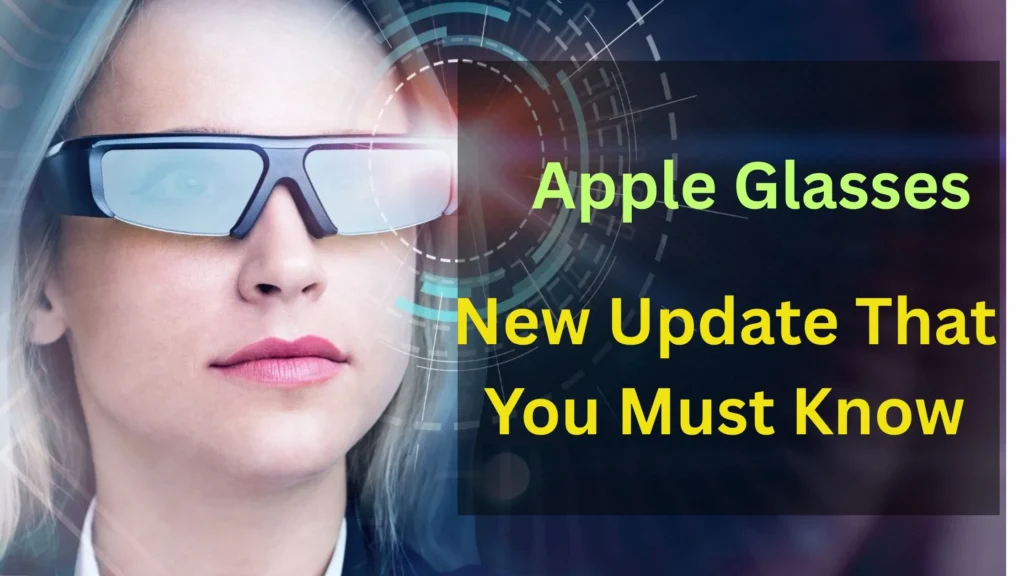Apple Glasses: Everything We Know About Apple’s AR Revolution
Apple has been secretly developing Apple Glasses—a lightweight, augmented reality (AR) wearable that could replace the iPhone. While not yet officially confirmed, leaks suggest a 2025-2026 launch with revolutionary displays, AI integration, and a standalone iOS-powered experience.
Here’s everything we know so far, from rumored specs to potential pricing—and whether they’ll be worth the wait.
📅 Apple Glasses Expected Release Date
- Latest Rumors: Late 2025 or Early 2026
- Possible Announcement: WWDC 2025 (developer preview)
- Competition: Aiming to surpass Meta Ray-Ban Smart Glasses & Samsung XR
🔥 Leaked Features & Specs
1. Display & Optics
- Micro-OLED Projection (floating screen in your field of view)
- “Retina-level” PPI (text as sharp as an iPhone)
- Dimming Electrochromic Lenses (auto-adjusts to sunlight)
2. Performance & AI
- Apple-designed “Bionic AR” Chip (M3-level power)
- LiDAR Scanner + Advanced Cameras (object detection, 3D mapping)
- Siri 2.0 (context-aware AI, real-time translations)
3. Design & Comfort
- Looks like regular glasses (unlike bulky Vision Pro)
- Lightweight (<80g) with prescription lens support
- Titanium frame options (premium edition)
4. Software & Ecosystem
- Standalone iOS-powered (no iPhone tether needed)
- App Store for AR apps (optimized versions of Maps, Messages, etc.)
- “Reality Composer” (Apple’s AR developer toolkit)
What to Expect from the Initial Apple Smart Glasses
Forget the bulk of a VR headset; the initial Apple smart glasses are rumored to be more akin to the stylish Ray-Ban Meta Smart Glasses. This means a focus on a more subtle, everyday wearable design, prioritizing convenience and discreet integration into daily life.
Key rumored features include:
- Cameras, Microphones, and Speakers: These will be integral for interacting with the world. Imagine taking calls, listening to music, and perhaps even live translations directly through your eyewear.
- AI Integration: A significant push for Apple’s smart glasses is their deep integration with Apple Intelligence. This means the glasses will likely leverage AI to analyze your surroundings, offer contextual information, and respond to voice commands via Siri. Think of it as a highly intelligent, hands-free assistant that understands your visual environment.
- Visual Intelligence: The glasses are expected to use onboard cameras and sensors to feed real-time data to AI systems, providing you with relevant information without needing to pull out your phone.
- Dedicated Chip: Apple is reportedly developing a custom chip for these glasses, based on Apple Watch SoCs, aiming for excellent power efficiency and a smooth user experience.
While these initial glasses might not offer the full AR capabilities of superimposing digital content onto your real-world view in a truly immersive way (that’s still a “many years away” project), they are seen as a crucial stepping stone.
The Long Game: True Augmented Reality
Apple CEO Tim Cook has repeatedly expressed his strong belief in augmented reality, calling himself an “AR fan number one.” The ultimate goal for Apple is to deliver a lightweight, fully functional AR spectacle that seamlessly blends digital information with your physical surroundings. This would represent a paradigm shift, moving beyond screens to truly spatial computing.
However, achieving this “holy grail” of AR glasses presents significant technical hurdles, including:
- High-resolution displays: Projecting vivid, 3D images onto thin lenses without distortion is a complex engineering feat.
- High-performance chips: Powering sophisticated AR experiences in a compact form factor requires immense processing power with minimal heat generation.
- Tiny, all-day batteries: Maintaining a sleek design while offering sufficient battery life for continuous use is a major challenge.
Apple’s current Vision Pro headset, while a powerful spatial computing device, highlights the complexities of this technology. The Vision Pro is a high-end, immersive experience, but its size and price point indicate it’s not yet a mass-market AR solution in the form of everyday glasses. The smart glasses are a more accessible entry into the wearable visual computing space.
Why Apple Glasses Matter
Apple’s entry into the smart glasses market is significant for several reasons:
- Mainstream Adoption: Apple’s design prowess and ecosystem integration could drive mainstream adoption of smart eyewear in a way that other companies haven’t quite managed.
- AI Frontier: These glasses could become a primary interface for Apple’s advancements in AI, offering a more natural and intuitive way to access and interact with intelligent systems.
- Ecosystem Expansion: Just as the Apple Watch extended the iPhone’s capabilities to your wrist, Apple Glasses could seamlessly integrate with the iPhone, Apple Watch, and other Apple devices, creating an even richer and more interconnected ecosystem.
- Competition and Innovation: Apple’s entry will undoubtedly intensify competition in the wearable tech space, pushing other players like Meta (with its Ray-Ban Meta glasses and Quest headsets) and Google (with its own smart glasses efforts) to innovate further.
💰 Apple Glasses Expected Price (Rumored)
| Model | Price Estimate |
|---|---|
| Base Model | $1,499 – $1,999 |
| Pro Model (cellular) | $2,500+ |
Note: Likely cheaper than Vision Pro ($3,500) but pricier than Meta Ray-Ban ($299).
🆚 Apple Glasses vs. Competitors
| Feature | Apple Glasses | Meta Ray-Ban | Samsung XR |
|---|---|---|---|
| Display | Micro-OLED AR | Small LED | 4K Micro-OLED |
| Weight | <80g | 50g | ~300g |
| OS | Standalone iOS | Requires phone | Android XR |
| Price | $1,499+ | $299 | $1,499+ |
✅ Potential Advantages vs. ❌ Challenges
| Pros | Cons |
|---|---|
| ✅ True everyday AR (no bulky headset) | ❌ Very high price |
| ✅ Deep iOS integration (iMessage, FaceTime AR) | ❌ Battery life concerns |
| ✅ Fashionable design (unlike Vision Pro) | ❌ Limited app ecosystem at launch |
Apple Glasses Price in India: Expected Cost & Launch Date ( Rumors)
As of July 2024, Apple has not officially announced its AR glasses, but leaks suggest a 2025-2026 launch. If released, here’s the expected India price, import taxes, and how to buy them early.
💰 Expected Price in India
| Model | US Price (Rumored) | India Price (Estimated) |
|---|---|---|
| Base Model | $1,499 (~₹1.25L) | ₹1,75,000 – ₹2,00,000 (after customs) |
| Pro Model (Cellular) | $2,500 (~₹2.1L) | ₹2,75,000+ |
Why So Expensive?
- 40-50% import taxes on premium electronics.
- Early adopter premium (limited supply).
📅 India Release Date
- Likely 6-12 months after US launch (if global rollout follows Apple’s pattern).
- Expected: Mid-to-Late 2026 (if US launches in early 2026).
🛒 How to Buy Early in India?
Option 1: Official Apple India Store
- Pre-orders via Apple India (if launched).
- Installment plans (via HDFC/ICICI cards).
Option 2: Import from US/UAE
- Amazon US/Global Store (Link)
- Total cost: ₹2L+ (shipping + 50% customs).
- No India warranty.
Option 3: Grey Market (Delhi/Mumbai)
- Shops like Heera Panna (Mumbai) or Nehru Place (Delhi) may import units.
- Risks: No warranty, inflated prices (up to ₹2.5L+).
⚠️ Challenges for Indian Buyers
- No service centers (repairs may require international shipping).
- 5G/Wi-Fi 6E band compatibility (may differ from US models).
- App ecosystem (some AR features might be region-locked).
🔮 What’s Next?
- 2024: More developer tools (ARKit updates)
- 2025: Possible prototype unveiling at WWDC
- 2026: Mass-market release
Final Verdict: Should You Wait?
✔ Wait if: You want the future of Apple’s AR vision in sunglasses form.
✖ Skip if: You need AR now (buy Vision Pro or Meta Ray-Ban).
Would you pay $1,500+ for Apple Glasses? Comment below! 👇



